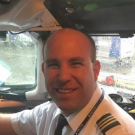
Tom Szczypinski
Controllers-
Posts
57 -
Joined
-
Last visited
Personal Information
-
Discord ID
nano120#5169
Recent Profile Visitors
561 profile views
Tom Szczypinski's Achievements
-
untilSector: EGTT.LACC.BBX.LONDONBooking for EGTT.LACC.BBX.LONDON created on the POSCON HQ.
-
untilSector: EGTT.LACC.BBX.LONDONBooking for EGTT.LACC.BBX.LONDON created on the POSCON HQ.
-
untilSector: EGTT.LACC.BBX.LONDONBooking for EGTT.LACC.BBX.LONDON created on the POSCON HQ.
-
untilSector: EGTT.LACC.BBX.LONDONBooking for EGTT.LACC.BBX.LONDON created on the POSCON HQ.
-
untilSector: EGTT.LACC.BBX.LONDONBooking for EGTT.LACC.BBX.LONDON created on the POSCON HQ.
-
Every aircraft must follow the flight plan that it submitted, unless it is outside of controlled airspace or received an exemption/deviation from the controller. Every flight plan has a defined set of flight rules, three of which you are likely to see on the Network; Instrument Flight Rules (IFR), Visual Flight Rules (VFR), and Special Visual Flight Rules (SVFR).
-
In the UK, all of the airspace at FL195 and above is designated as Class C. We designate airways that cross FL195 as 'Upper' airways. These are shown through the letter 'U' being added as a prefix to the airway (i.e. UL9, or UM185).
-
Airways are currently an essential part of travelling by plane; they connect Fixes and radio navigation aids to form a route, which aircraft must follow. They allow for even distribution of traffic, and ensures that controllers know where aircraft will be at any one time. Airways are also known as Air Traffic Service Routes, or ATS Routes. In the UK, there are currently two categories of ATS Routes in use; ATS Route Designator Description L, M, N, P Routes for area navigation which form part of the regional networks of ATS routes. Q, T, Y, Z Routes for area navigation which do not form part of the regional networks of ATS routes In the London (EGTT) FIR, airways and ATS routes must be used for a valid IFR flight plan, unless non-standard procedures are to be followed. In the Scottish (EGPX) FIR, free route airspace is in use.
-
When first starting out as an Air Traffic Controller, speaking on frequency can be quite daunting. However with time, you will become more and more comfortable with the frequency. It is important to remember that when talking on frequency, all transmissions should be professional, clear and concise. General chit-chat is not allowed. This ensures that both pilots and you as the controller can focus. This section will help you with talking on frequency, including the use of the phonetic alphabet, phraseology, ICAO codes, and other useful information.
-
In the UK, like many other countries, we operate a semi-circular rule for altitudes. This applies to both inbound and outbound aircraft. Essentially, the rule is simple; Aircraft flying East will do so on an odd flight level. Aircraft flying West will do so on an even flight level. When talking about even or odd flight levels, we refer to the number second-to-last in the flight level (.e.g FL190, FL240, FL60) This rule relates to the magnetic heading that the airway is going to take the aircraft, however for the most part usually it is correct to assume the geographical location of the destination aerodrome vs the geographical location of the origin aerodrome (whether the destination aerodrome is East or West of the origin). While trivial, this rule ensures the safety of thousands of aircraft every day, by ensuring at least 1000ft of separation between aircraft travelling in different directions. Essentially, it avoids head-on collisions between aircraft. As a controller, you must check that the aircraft is flying the correct flight level according to this rule. Note: Some countries operate a North/South semi-circular rule, such as France, Italy and Spain. As such, there will be times where aircraft filing an odd Flight Level when flying South, even though the airport is in the West, may still be correct. In these cases, it is best to use your own judgment and decide if the level the aircraft has filed is correct or not.
-
In the aviation industry, rather than spelling out letters individually by simply saying them (e.g. saying E for the letter E), we use the phonetic alphabet. This is to ensure that all pilots and controllers are able to communicate effectively across the globe, without risking miscommunication due to radio noise/static, accents, or by simple lack of clarity. The NATO phonetic alphabet is the standard for aviation, and for the POSCON Network too. Below, you can find the entire phonetic alphabet, their morse code correspondent, as well as how to pronounce them. When pronouncing individual letters on the Network, whether as a pilot or controller, you must use this phonetic alphabet. This applies to callsigns, as well as names of Fixes and radio navigation stations.
-
The International Civil Aviation Organisation (ICAO) has established a well-known and widely used aerodrome designation system; more widely known as ICAO Airport Codes. It comprises of 4 letters, and is simple to decode. The first letter usually corresponds to the wider geographical area the country of the aerodrome belongs to; Depending on the area, what follows after the first letter is either the aerodrome designator itself, or the country code. For example, in the case of the United States, the aerodrome designator falls directly after the area; KJFK for the JFK airport in New York, or KMEM for Memphis. In most of Europe, the second letter designated the country code; EG for the UK, LF for France, ED for Germany. Then, the aerodrome designator will follow; EGLL for Heathrow, EGCC for Manchester, EDDH for Hamburg. In the aviation industry, and the Network, we use these ICAO country codes for flight plans. If you are unsure of the airport that the ICAO code corresponds to, you can simply look it up on Google, or say the full code phonetically (Echo, Golf, Lima, Lima, for EGLL). Over time, as a controller you will find you learn many of these codes to memory by being exposed to them.
-
The world moves quickly, and so does the aviation industry. Airspace structure is revised, routes are changed, and aerodromes change with them. As such, all of the information in the AIP has to be regularly updated. This is done via AIRAC; a standardised system that ensures all updated information is correctly advertised, that all relevant people are able to see the updates, that the regularity of updates is maintained, and most importantly that everyone sees the same data. Updates to the AIP are made every 28 days. These periods are referred to as AIRAC cycles. Every 28 days the AIRAC cycles changes, and so does the AIP. There are usually 13 AIRAC cycles each year. These cycles are given a 4 number code, which can be easily identified; the first two numbers correspond to the last two numbers of the year (i.e. 22 for 2022), and the last two numbers correspond to the number of the cycle in the year (i.e. 2206 for a cycle effective 16th June 2022). The effective dates of AIRAC cycles 2020-2024 can be found below. The Division also releases a new sector file for use on the Network, usually with each AIRAC cycle. It is recommended all controllers use the most up-to-date sector file available, as others may be missing crucial updates/revisions.
-
The AIP is informally known as the Airman's Manual. Almost every country in the world will have an AIP, and most are publicly visible. In the UK, NATS is responsible for publishing and updating the AIP accordingly. It is publicly visible, and includes all information pertaining to the EGTT (London) and EGPX (Scottish) airspace. The POSCON UK Division also uses it to ensure we remain as realistic as possible, as well as an extremely useful resource for both controlling and flying alike. It is often broken down into 3 parts, each with a corresponding acronym used for sub-sections and charts; General (GEN) - Contains information on legal matters, acronyms and abbreviations, conversion charts and available services. En-Route (ENR) - Contains information on sectors, squawk allocation, routes, navigational waypoints and radio fixes (such as VORs, NDBs and DMEs), and en-route positions and frequencies. Aerodrome (AD) - Contains aerodrome-specific information, such as positions, frequencies, runways, local procedures and restrictions, and charts.
-
As a controller, it is your responsibility to ensure that the aircraft's flight plan is valid. While this may seem trivial, it can be daunting especially when starting out as an ATCO. Incorrect flight plans may route through restricted airspace, not comply with noise abatement procedures, use outdated and unusable fixes, or even cause conflicts in the air. It is the controllers responsibility to ensure that the flight plan complies with altitude, airway, SID and STAR restrictions while it remains in the UK. In the real world, all international flight plans would undergo multiple checks to ensure its validity, however on the Network we do not have that luxury. Controllers cannot be expected to learn all of the restrictions of airports and airspace in the world, and as such we limit this to the UK airspace. This also highlights the need for en-route controllers to be able to spot mistakes quickly for aircraft entering UK airspace. In this section we will delve into what makes a flight plan valid, break it down into multiple parts, make sure you know how to read it, and most importantly how to spot mistakes and/or inaccuracies.




